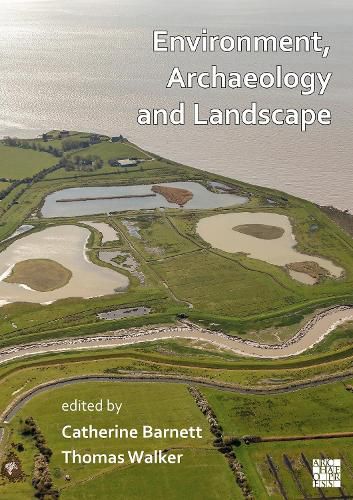Readings Newsletter
Become a Readings Member to make your shopping experience even easier.
Sign in or sign up for free!
You’re not far away from qualifying for FREE standard shipping within Australia
You’ve qualified for FREE standard shipping within Australia
The cart is loading…






Environment, Archaeology and Landscape is a collection of papers dedicated to Martin Bell on his retirement as Professor of Archaeological Science at the University of Reading. Three themes outline how wetland and inland environments can be related and investigated using multi-method approaches. ‘People and the Sea: Coastal and Intertidal Archaeology’ explores the challenges faced by humans in these zones - particularly relevant to the current global sea level rise. ‘Patterns in the Landscape: Mobility and Human-environment Relationships’ includes some more inland examples and examines how past environments, both in Britain and Europe, can be investigated and brought to public attention. The papers in ‘Archaeology in our Changing World: Heritage Resource Management, Nature Conservation and Rewilding’ look at current challenges and debates in landscape management, experimental and community archaeology. A key theme is how archaeology can contribute time depth to an understanding of biodiversity and environmental sustainability. This volume will be of value to all those interested in environmental archaeology and its relevance to the modern world.
$9.00 standard shipping within Australia
FREE standard shipping within Australia for orders over $100.00
Express & International shipping calculated at checkout
Environment, Archaeology and Landscape is a collection of papers dedicated to Martin Bell on his retirement as Professor of Archaeological Science at the University of Reading. Three themes outline how wetland and inland environments can be related and investigated using multi-method approaches. ‘People and the Sea: Coastal and Intertidal Archaeology’ explores the challenges faced by humans in these zones - particularly relevant to the current global sea level rise. ‘Patterns in the Landscape: Mobility and Human-environment Relationships’ includes some more inland examples and examines how past environments, both in Britain and Europe, can be investigated and brought to public attention. The papers in ‘Archaeology in our Changing World: Heritage Resource Management, Nature Conservation and Rewilding’ look at current challenges and debates in landscape management, experimental and community archaeology. A key theme is how archaeology can contribute time depth to an understanding of biodiversity and environmental sustainability. This volume will be of value to all those interested in environmental archaeology and its relevance to the modern world.